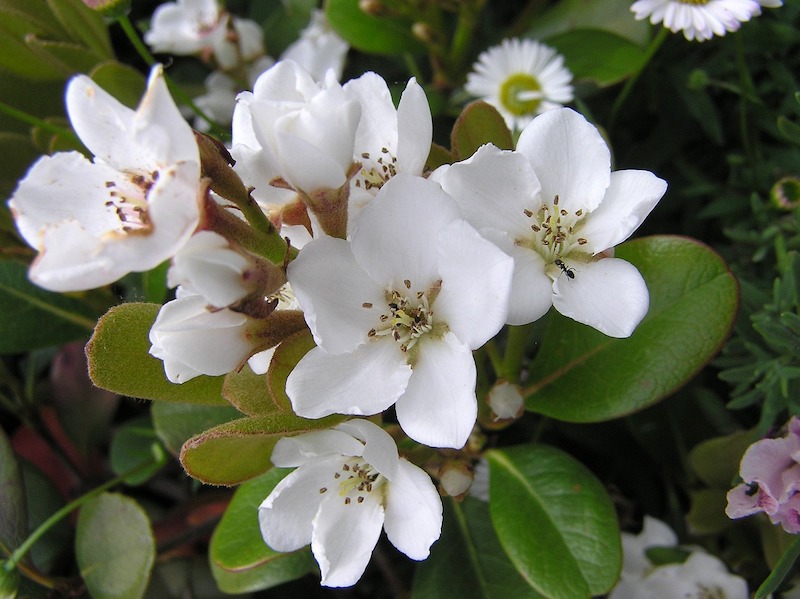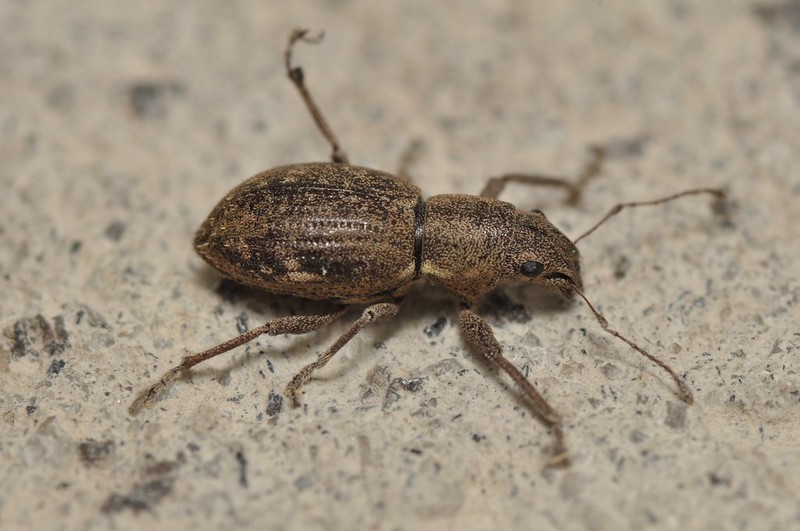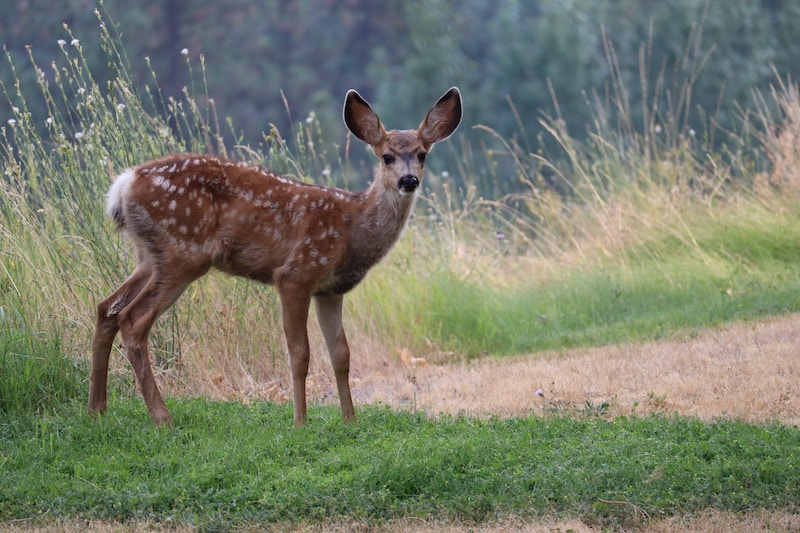Indian Hawthorn is prone to just a handful of pests which, for the most part, only cause aesthetic damage to these beautiful and dependable broadleaf evergreen shrubs. Black Vine Weevils, Flathead Borers, and Fuller’s Rose Beetles all sound much more dangerous to your garden than they truly are. Aphids and deer, on the other hand, can cause severe damage, especially to younger shrubs, which may not be able to recover from extensive damage.

Common Indian Hawthorn Pests
Aphids
Aphids are sap-sucking insects that attack plants weakened by improper growing conditions. Aphids come in many different colors and sometimes are referred to as whiteflies, green fly or black flies. Regardless of aphid type, the treatment is the same for any plant. These soft-bodied insects pierce leaves and soft stems to feed on the plant's sap. Large infestations will cause shrubs to decline in vigor due to a decrease in the ability to photosynthesize effectively. Leaves will become distorted, yellow, and eventually die. A black sooty mold will form on heavily infested plant material. Aphids excrete honeydew as they feed, which attracts not only sooty mold spores but also ants who feed and farm the honeydew. Many generations of aphids are produced during the growing season and can overwinter on leaf litter or, in the case of Indian Hawthorn, near or on the buds for the next season's flowers.
Treating Aphids on Indian Hawthorn
Treating aphids can be a quick job when a diagnosis is made early. Left too long, affected plants may become so infested that they need to be pruned back severely or removed altogether. Because aphids are soft-bodied insects, they are readily killed with mild insecticidal soap. Use a brand that has the OMRI seal of approval to ensure that it meets the standards for organic garden practices. Many applications may be needed to fully control aphids. A sharp spray of water from the hose every few days will also accomplish control of aphids. This will not only knock the insects off the shrub but drown any that remain. Small areas of infestation may be controlled by cutting out affected plant stems or removing damaged leaves. Because Indian Hawthorn is a broadleaf evergreen, new foliage may not grow back until the next growing season.
Preventing Aphids on Indian Hawthorn
Preventing aphids is as easy as growing Indian Hawthorn in the right conditions. Plant the shrubs in full sun with well-draining soil. Resist the urge to overfeed this evergreen. Over-fertilizing will cause lush, dense foliage growth, which is actually weak and attractive to sap-sucking insects such as aphids. Cut out and dispose of any damaged foliage or stems. Good garden hygiene in the fall and spring will reduce the number of aphids that overwinter in leaf litter or nearby weeds. Allowing beneficial predators to thrive in your garden is another way to ensure that any outbreaks of aphids are quickly controlled. Lady beetles and their larvae, lacewings and syrphid fly larvae all eat their weight and more in aphids. Not using broad-spectrum pesticides in your garden will protect the beneficial predators and pollinators so that a natural balance of predator and prey can be established.
Black Vine Weevil
Weevils are flightless and nocturnal insects that have one generation of offspring a year. The adults spend the day hiding at the base of infested shrubs, and climb up the trunk or low-hanging branches to feed at night. Both the adult Black Vine Weevil and its larvae do damage to plants. Adults chew at the edges of leaves and can obliterate new shoots and flower buds. The larvae stay in the ground to feed on roots and the base of the shrub until they pupate in the spring. The pupa is the most common stage to overwinter, although adults in warmer growing zones will overwinter in leaf litter. The notched evergreen leaves of Indian Hawthorn may take quite a while to regrow after controlling Black Vine Weevil. The worst damage is caused by the whitish larvae feeding on the roots. Damage to the roots or base of the main stem exposes the shrub to secondary diseases and may even kill the entire shrub if left untreated.
Treating Black Vine Weevil on Indian Hawthorn
Monitoring for damage in early spring will determine what course of action to take. Light infestations can be controlled by handpicking the adults off the plants or luring them into traps at night. Using traps made of shallow cans filled with a liquid will trap many of the nighttime marauders. A sticky coating of tanglefoot is another good way to trap adults that try to climb into the shrub canopy to dine at night. Wrapping a piece of plastic or weed block fabric around the lower portion of the stem and coating it with Tanglefoot will act like a glue trap to stop the adults in their tracks. If nothing else seems to work, a spray of Spinosad may be the last resort. Follow all of the manufacturer's instructions and spray either early in the day or the evening to avoid harming any beneficial insects and pollinators. Reapplication may be needed during the growing season.
Preventing Black Vine Weevil on Indian Hawthorn
The best prevention for Black Vine Weevil is good garden hygiene in the spring and fall. Remove any fallen foliage so that adults do not have a place to lay eggs or overwinter. Trim branches that are closest to the ground. This will make it more difficult for the seevils to climb into the canopy of the shrub. Look for cultivars of Indian Hawthorn that are less susceptible to weevils.
Flatheaded Borers
Flatheaded Borers are a beetle whose larval stage causes the greatest damage to shrubs and trees. The adult beetle lays eggs in damaged parts of the bark and stems of shrubs. Damage from improper pruning or deer browsing are first-choice locations for the eggs to be deposited. The larvae feed under the bark of branches throughout the summer and fall, causing extensive damage. The mature larvae overwinter and pupate in the spring. As adults, the borers feed on the foliage and base of soft stems while they lay eggs for the next generation. One generation a year is laid. The smallish holes in the bark where the adults emerge in the spring are a clue that Flatheaded Borers are present. Over time the bark may begin to look rough and have visible winding paths where the larvae have been feeding on the cambium and other woody parts of the shrub.
Treating Flatheaded Borers on Indian Hawthorn
Early treatment for Flatheaded Borers is the only way to control an outbreak. Shrubs that are heavily infested may need to be removed and disposed of. To limit the spread of an infestation, prune out infested branches or stems as far below the area of damage as possible. There are no pesticides authorized for use by the home gardener.
Preventing Flatheaded Borers on Indian Hawthorn
Plant Indian Hawthorn in its preferred setting. Well-draining, slightly acidic soil and full sun exposure will help to grow healthy shrubs that are better able to fend off attacks by pests and disease. Avoid injuring the bark or stems with improper pruning techniques or mechanical damage from weed whackers or lawnmowers. Quickly and cleanly cut back any browsing damage from deer.
Fuller Rose Beetle
Rose Beetles cause damage to the foliage, flowers, and roots of Indian Hawthorn. The adult beetle is grayish brown and 3/8” long. It lays clusters of yellowish eggs in any roughed-up area of the bark. The eggs hatch into creamy white larvae that are large and quite wide. The larvae fall off the shrub and remain in the soil, chewing on roots and damaging the base of the shrub. The adults climb into the canopy of the shrub at night to feed on leaf margins and flowers, causing extensive, but mostly cosmetic damage. Healthy, mature shrubs are rarely bothered by attacks from Fuller’s Rose Beetles and will quickly recover, producing new foliage the following season.

Photo by Pavel Kirillov, unedited, Flickr, Copyright CC by-SA 2.0
Treating Fuller Rose Beetle
There are no pesticides available to treat Fuller Rose Beetles. The only treatment is to hand-pick any adults seen on the shrubs, drowning them in a bucket of soapy water. Reducing adult populations helps to eradicate the larval stage. Wrapping the base of the shrub with a band of plastic and applying Tanglefoot will trap adults as they climb into the canopy to feed at night.
Preventing Fuller Rose Beetle
Keep the bottom branches of the shrub cut short so they do not touch the ground. Adult Fuller Rose Beetles will use low-growing plant material as a ladder to reach the upper parts of a shrub. Grow Indian Hawthorn in full sun and well-draining soil so that it remains in good health and can withstand light attacks from any pest.
Deer
Unfortunately, Deer are the worst pest of Indian Hawthorn. Even though deer typically follow the same path through yards and gardens for browsing, they will go out of their way to seek out Indian Hawthorn. The juicy foliage and delicate flowers are like candy to Deer. Young plants are especially vulnerable. The ragged tears and bites of deer browsing look much different from the neat shearing that from rabbit damage. Mature shrubs may be able to regrow and recover from deer browsing, but only if they are given some sort of cover or fencing protection. Once a deer discovers Indian Hawthorn in your landscape, it will keep coming back.

Treating Deer Browsing on Indian Hawthorn
Helping Indian Hawthorn to recover will involve protecting it from further damage. Using Remay fabric or bird netting on large areas of hedging will allow the foliage to regrow. Fencing an area is the best preventative for deer, although it must be at least 8 feet high, and large areas of fencing may be cost-prohibitive or not allowed by residential HOAs. Individually caging a few shrubs until they have reached maturity is often successful for growing Indian Hawthorn. But this also may not be possible if you have a large volume of shrubs. Another option is to grow the shrub close to the house or in a container on a deck or patio. Deer repellents or bittering spray may work for a short time but they must be reapplied after heavy rains or overhead watering.
Sources: "Rhaphiolepis indica." The North Carolina Extension Gardener Plant Toolbox. plants.ces.ncsu.edu
 |
Author Robbin Small - Published 6-12-2023 |
